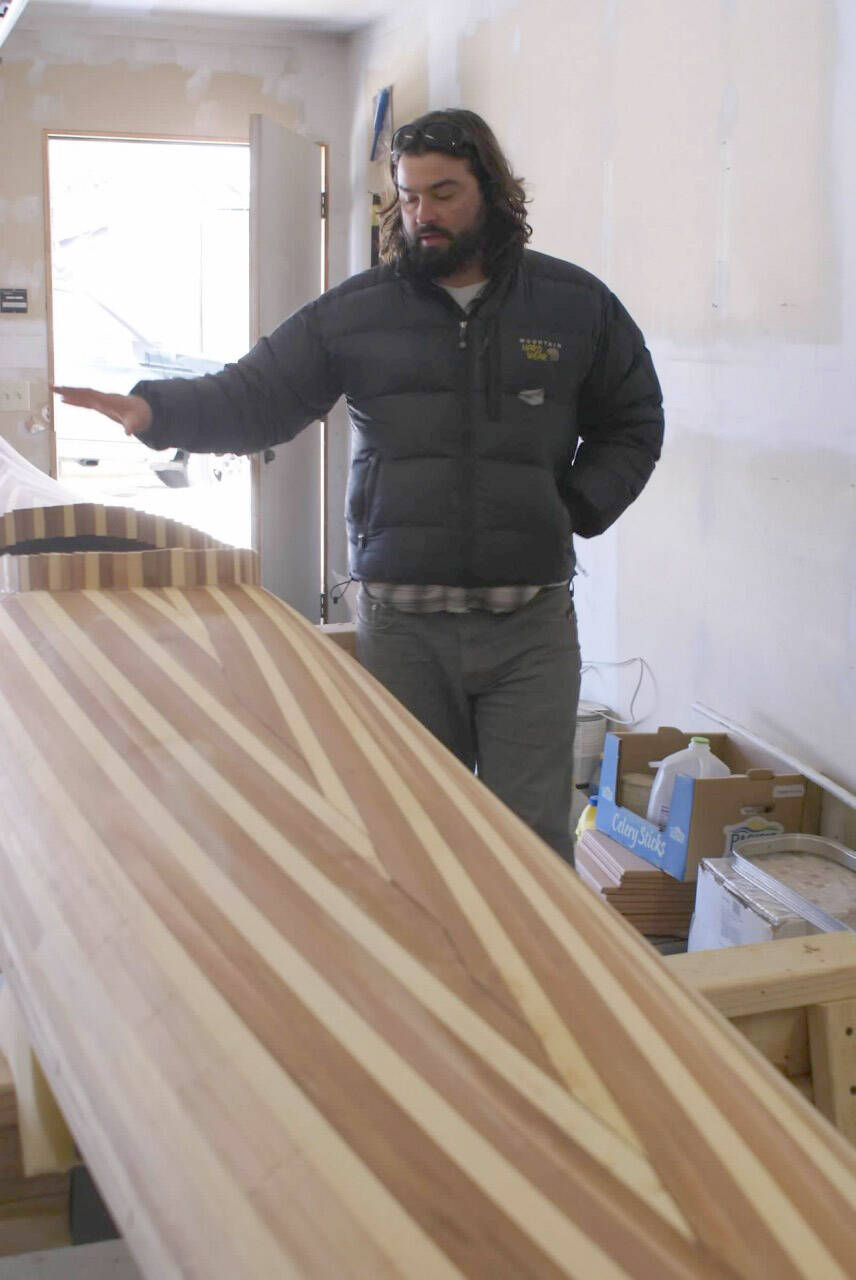May 1, Lachine, Montreal, Quebec, Canada. I finally found myself standing on a dock on the Saint Lawrence Seaway, above the Lachine Rapids, the traditional launching off point of the voyageurs, with my boat and gear ready to go.
It was a breathtakingly beautiful crisp morning. The riverwalk was buzzing with people. I could hardly contain my excitement as I dipped my paddle and made the first stroke of what would be the first of thousands to come.
I paddled farther and farther from shore as I could see the people picnicking, jogging and walking, growing smaller over my right shoulder. I was in utter bliss when I started feeling water tickling my ankles.
My first thought was, “Wow; I must’ve got a lot more water in here when I was getting in than I thought.”
My second thought was, “Oh no!”
Moments later, I felt the water sloshing around my mid-calf. My boat started to rock left and right. I braced my paddle hard, but the water sloshing in my boat tipped me over.
I tried to roll up several times, but my boat was too heavy, and I had to bail out. I had only been in my boat for minutes before I was in the drink.
I started to tug my boat along as I swam for shore. I looked at my watch and looked at the shore. I estimated I only had 15 minutes in this water before I was hypothermic. So, I had no choice but to leave my boat and swim for shore.
Reaching shore, I tried to clamor out as quickly as possible, but my body didn’t respond, and it was like moving through molasses. Finally, I crawled onto the grass and flopped down on my back.
Farther down the shore, a woman was yelling into cupped hands in the direction of my boat, which was floating slowly down to the Saint Lawrence. I stood up, and she spotted me and spoke in French.
“I don’t speak French,” I said.
She replied, “Are you OK?”
“Yes,” I said. “I need my boat.”
She looked me in the eyes.
“No, you’re not OK,” she said, dialing 911.
Less than two hours into my epic journey, I was in the back of an ambulance. They cranked the heat up, stripped me down and wrapped me up in blankets. After they warmed me up sufficiently, they tried to transport me to the hospital, but I refused.
I finally climbed out of the ambulance just in time to see the fire department pulling my boat out of the water.
It was leaking like a spaghetti strainer. When building the boat, I used staples and glue before I came back and pulled them out before epoxying and fiberglass the entire thing. Every single one of those staple holes had water shooting out of it.
The epoxy had not hardened off properly and it would take weeks, which I didn’t have, to get it seaworthy. It was a total disaster.
Anne, the woman who had called the ambulance, invited me to camp in her family’s backyard that night. And in the morning, her son Sebastian took me to the kayak store to purchase a new boat.
I went from a 17-foot, 45-pound beauty with a unique portaging system that allowed me to pull out two bags, throw everything on my back, and be off down the portage lickety-split; to a 19-foot, 75-pound hunk of plastic.
This larger boat required me to pull out my gear in pieces and repack into my more oversized bag before I portaged.
I would soon realize that every portage became three lumbering trips instead of one swift trip. I would have to carry my gear, put it down, hike back, get my boat, walk back, and then repack my boat before setting off again.
Almost, but not quite like the voyageur’s 90-pound packs, they shuffled/jogged across the county. Not ideal for crossing the continent. But I pushed on.
Paddling up the mighty Ottawa River, I was still very much in the city, with Ottawa to my left and Hull to my right. I paddled against the river until it became too strong, and I had to portage. I stashed my gear in some bushes and carried my kayak over my head through downtown Ottawa.
I stood at crosswalks waiting with businesspeople that hardly seemed to notice me. In the evening, I would have to paddle until it got dark and then find some bushes to sleep in. I didn’t even set up my tent for several nights. I felt like a coyote in an urban environment; I was trying not to be seen by the humans.
As I worked my way from the Ottawa River to the Mattawa River, my surroundings became less densely populated. The country started to become prettier, and it was downright gorgeous when I reached the French River and the Georgian Bay on Lake Huron.
When I left home, I was festively plump and pale and not in excellent shape. With the passing days, I began to feel myself growing stronger, and my body became harder. I fell into a rhythm.
The main thing was just to keep moving. I traveled along the southern border of the great boreal forest, lake to lake, day after day, paddle stroke after paddle stroke. Surrounded by beauty and serenity, I was filled with a contentment that I had not felt before or since.
Nate Grinnell is a seasonal on the Kenai National Wildlife Refuge trail crew, with deep ties to river adventures. Find out more about refuge events, recreation, and more at kenai.fws.gov or Facebook: https://www.facebook.com/kenainationalwildliferefuge and more Refuge Notebook articles (1999–present) at https://www.fws.gov/kenai-refuge-notebook.

